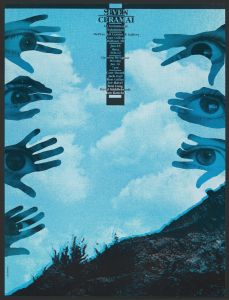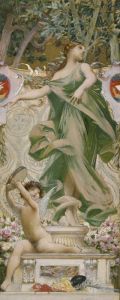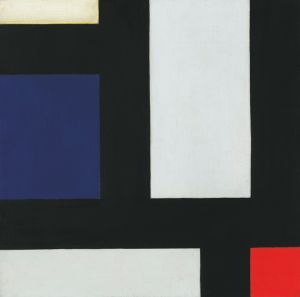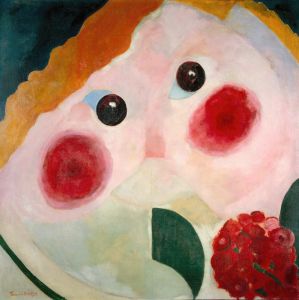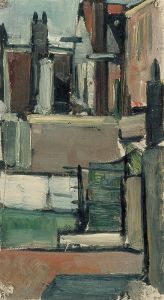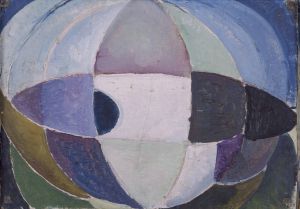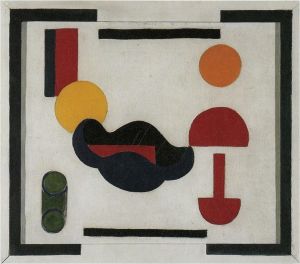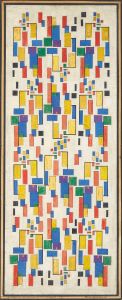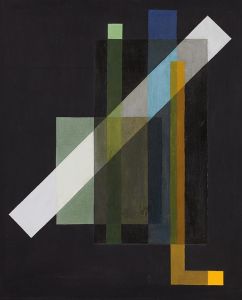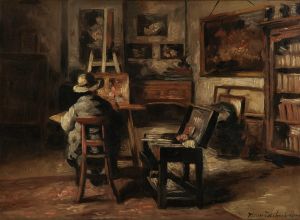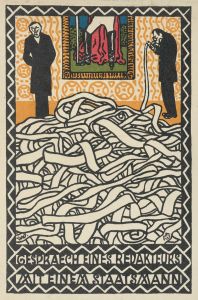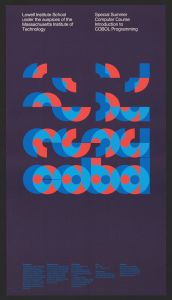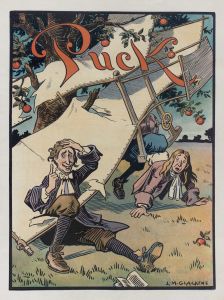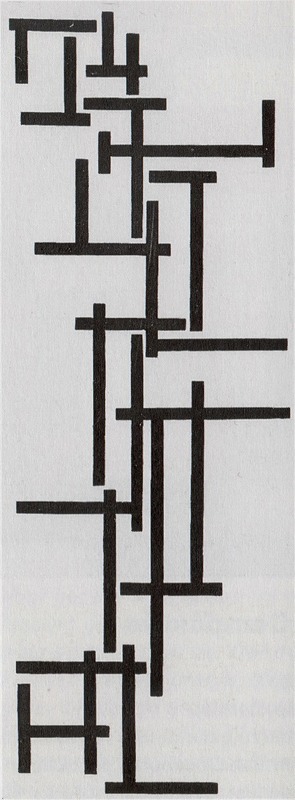
Tarantella
A hand-painted replica of Theo van Doesburg’s masterpiece Tarantella, meticulously crafted by professional artists to capture the true essence of the original. Each piece is created with museum-quality canvas and rare mineral pigments, carefully painted by experienced artists with delicate brushstrokes and rich, layered colors to perfectly recreate the texture of the original artwork. Unlike machine-printed reproductions, this hand-painted version brings the painting to life, infused with the artist’s emotions and skill in every stroke. Whether for personal collection or home decoration, it instantly elevates the artistic atmosphere of any space.
Theo van Doesburg's Tarantella is a painting created in 1916 by the Dutch artist, who was a key figure in the De Stijl movement. The artwork reflects van Doesburg's early exploration of abstraction and his interest in translating music and rhythm into visual forms. The title, Tarantella, refers to a lively and fast-paced Italian folk dance, which is traditionally accompanied by energetic music. This connection to dance and rhythm is evident in the dynamic composition and vibrant use of color in the painting.
During this period, van Doesburg was influenced by various avant-garde movements, including Cubism and Futurism, which can be seen in the fragmented and geometric forms present in Tarantella. The painting exhibits a sense of movement and energy, capturing the essence of the dance through its interplay of shapes and colors. While it predates van Doesburg's full commitment to the strict geometric abstraction of De Stijl, Tarantella demonstrates his growing interest in reducing forms to their essential elements.
The artwork is also notable for its use of color, which van Doesburg employed to evoke emotion and rhythm. The bold and contrasting hues create a sense of dynamism, aligning with the lively nature of the tarantella dance. This approach to color and form reflects van Doesburg's broader artistic philosophy, which sought to harmonize visual art with other disciplines, such as music and architecture.
Tarantella is part of van Doesburg's early body of work, created before he co-founded the De Stijl movement in 1917 alongside Piet Mondrian and others. The painting provides insight into his artistic development and his experimentation with abstraction. It serves as a bridge between his earlier, more representational works and the purely abstract compositions that would define his later career.
The painting is held in the collection of the Kröller-Müller Museum in Otterlo, Netherlands, which houses a significant number of works by van Doesburg and other modernist artists. Tarantella remains an important example of van Doesburg's early contributions to modern art and his efforts to integrate the principles of rhythm and movement into his visual language.





